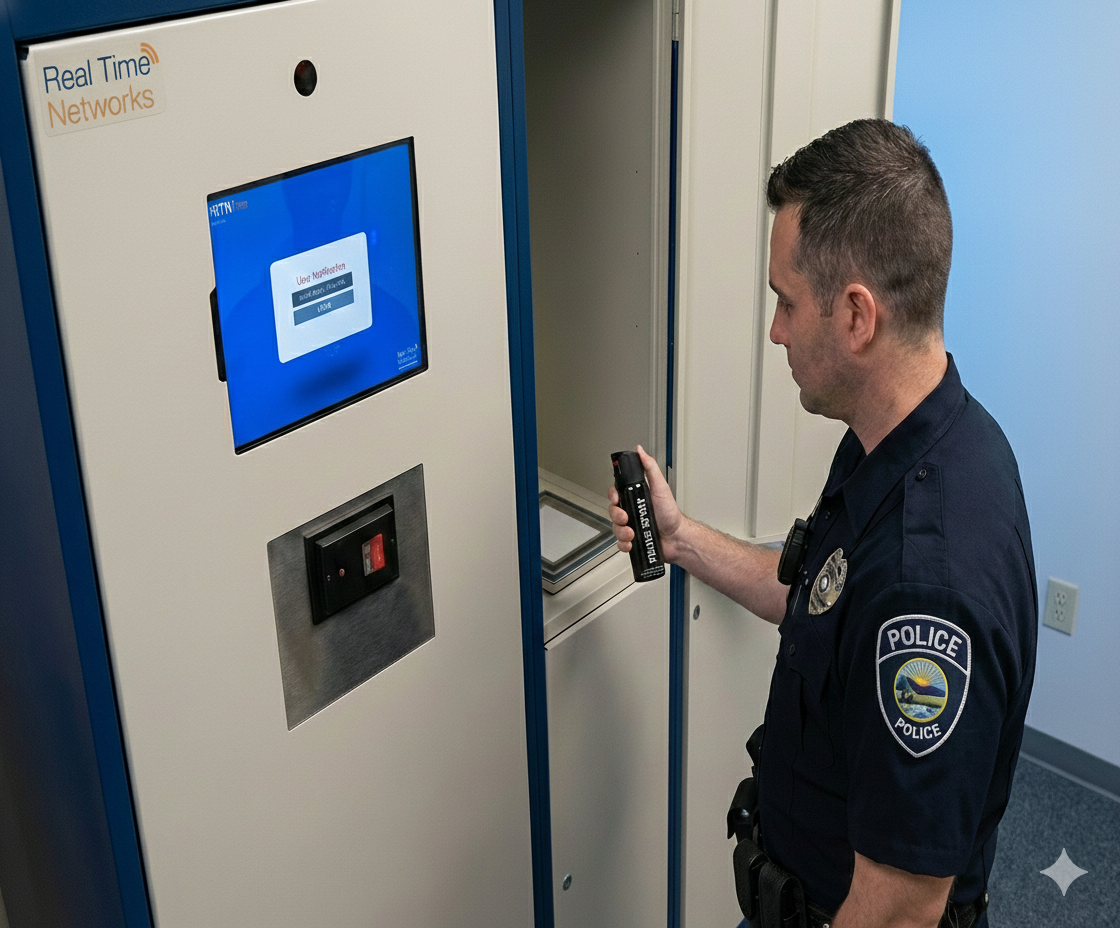By Jay Palter | February 27, 2025
We’ve already taken a few steps into 2025, and already we’re seeing physical security threats continue to evolve at a concerning rate. Organizations now face sophisticated threats that blur the lines between physical and digital security, from AI-enabled access control breaches to deepfake-powered social engineering attacks. And growing social and economic instability, among other concerns, have created a working reality filled with uncertainty.
- AI-Powered Security: A Game-Changer or a Growing Threat?
- Drone Security Risks: How to Detect & Neutralize Threats
- Infrastructure Attacks: How to Secure Critical Business Operations
- Insider Threats in 2025: How Employees Become Security Risks
- Protecting Executives from Targeted Attacks & Cyber Threats
- Cyber-Physical Attacks: How Hackers Are Targeting Real-World Assets
- Data Privacy Regulations in 2025: Avoiding Heavy Compliance Fines
- Corporate Events Under Attack: Securing Conferences & Trade Shows
- 2025 Security Strategy: How to Future-Proof Your Organization
Physical security today requires tools and awareness that extend far beyond what conventional measures like surveillance cameras and access control systems can handle independently. Today, Security professionals must understand how emerging technologies can strengthen and compromise their organizations.
Security professionals who want to navigate 2025 successfully must adapt their strategies to address both traditional and emerging threats. This article examines the most critical physical security challenges facing security professionals in 2025.
AI-Powered Security: A Game-Changer or a Growing Threat?

While some experts caution against relying on AI due to the potential for mistakes generated by AI “hallucinations,” the technology is gaining traction as a reliable option for many different security applications—especially those where sifting through and summarizing large amounts of data is necessary. The challenges here will lie in “training” the AI to care about what matters most to your organization. For example, someone trying your front door after hours may not be a high-priority concern, but someone trying to enter your executive suite certainly is.
Despite these concerns, many anticipate increased adoption of AI-based security solutions. There is a growing demand across industries for more automation, particularly in education, healthcare, and finance.
Drone Security Risks: How to Detect & Neutralize Threats

Drones are rapidly transitioning from a niche technology to a widely used technology across sectors. They have many potential security applications, but recent incidents, like the mysterious drone sightings over New Jersey, highlight the growing public concern about their misuse.
As prices continue dropping, expect drones to be increasingly weaponized for malicious activities in 2025. This surge in drone-related threats will require businesses and law enforcement agencies to develop anti-drone procedures, which might include:
- Drone Detection Systems: Implementing advanced radar and sensor technologies to identify and track unauthorized drone activity within a security perimeter.
- Drone Countermeasures: Specialized equipment like drone jammers will often be used to disrupt malicious drone operations.
- Specialized Training: Equipping security teams with the knowledge to respond effectively to drone threats, including identification, tracking, and mitigation strategies.
Infrastructure Attacks: How to Secure Critical Business Operations
Sabotage and other targeted attacks on global infrastructure appear to be ramping up. Attackers may target something larger scale, like the undersea network cabling in that article. Still, it is just as likely to be on a smaller scale, where attackers look to disrupt local utilities or even individual businesses.
Electrical systems, HVAC, network services, and emergency response systems are all prime targets for attackers looking to sew chaos. These attacks are particularly difficult to manage at scale. Countermeasures and deterrence tend to be costly.
Enhanced physical security measures:
Public and private organizations can reinforce perimeter security with more physical barriers, implement underground utility protection, and enhance security monitoring. IoT sensors are proving to be a more cost-effective measure here, especially for distributed systems like a power grid.
Redundant systems and monitoring:
Deploying redundant systems ensures operational continuity even if one system is compromised. No matter how good your security is, nothing will ever be 100 percent effective at deterring motivated attackers. Recognizing this and implementing necessary redundancies on critical systems is a costly but effective measure when maximum uptime is important.
Insider Threats in 2025: How Employees Become Security Risks

Insider threats have always posed a unique challenge to corporate security, but moving into 2025, the landscape is evolving. Employees driven by personal grievances, political differences, or activist causes are increasingly becoming a complex threat more and more organizations have to deal with. Political lightning rod industries—like technology, finance, pharmaceuticals, and defense—face especially heightened risk from bad actors whose motivations may be tied to political or ideological agendas.
Early detection and mitigation are the most effective strategies for corporate security teams. Organizations must develop insider threat detection programs that monitor security system data feeds for changes in behavior and repeated unauthorized access attempts.
Combining human oversight with technology-driven monitoring systems is a more comprehensive approach. Fostering a culture of transparency with clear reporting channels for suspicious behavior will also reduce the chance for insider threats to remain undetected.
Protecting Executives from Targeted Attacks & Cyber Threats
Recent events in business and politics have highlighted what appears to be an emerging risk of violence against leadership in politically controversial sectors.
Social media has become a particularly potent tool for malicious actors here. We see it regularly used to disseminate misinformation, support bad actors doxxing (publicly revealing private data) targets, and generally amplifying what used to be fringe calls to violence.
Security teams must carefully assess each threat to determine its legitimacy and potential impact. This requires a multi-pronged approach, including physical security measures, online monitoring, and clear reporting and response procedures. Together, these will require a more unified approach going forward, which dovetails with our next trend.
Cyber-Physical Attacks: How Hackers Are Targeting Real-World Assets
The idea has been discussed for years, including on our blog. Cyber and physical threats are often combined into converged, sophisticated attacks that target digital systems and physical assets. We’re already seeing this in the form of evolving ransomware tactics that bring down critical infrastructure. The attackers have found that presenting a physical threat rather than just compromising data increases their leverage.
Every organization—public and private—must adapt. We expect to see many businesses consider the following:
Integrated Security Technologies

There will be a growing demand for security technologies that monitor and protect digital and physical assets. This will be part of a wider approach in which security teams try to adopt a more holistic strategy.
Employee Cyber Awareness Training
Businesses recognize the human element as a critical factor in security and will invest heavily in updated employee training programs. These programs will focus on equipping staff with the knowledge and skills to identify potential threats early on, understand best practices for cybersecurity hygiene, and respond effectively before attacks gain momentum and cause widespread damage.
Cross-Team Security Collaboration
The need for better communication and information sharing has become too hard to ignore. As the line between cyber and physical threats blur, security teams will respond by unifying their expertise in these domains. Leadership will push them to take a more collaborative approach to allow quicker, more effective responses.
Data Privacy Regulations in 2025: Avoiding Heavy Compliance Fines
In 2025, more organizations will prioritize data privacy as a security concern. The main drivers behind this shift are the increasing cost of data breaches and the ever-growing complexity of data privacy regulations like GDPR, CCPA/CPRA, and NIS2.
However, not all physical security systems have data privacy in mind. Going forward, when selecting new solutions, IT and physical security teams will carefully consider several factors:
- Data Protection by Design: Security teams will look for management systems incorporating encryption, strong access controls, and other features to safeguard sensitive information.
- Vendor Certifications: Solutions offered by vendors holding recognized certifications like ISO 27001 and SOC 2 Type II will have been designed with data security and privacy in mind.
Corporate Events Under Attack: Securing Conferences & Trade Shows
Conferences, trade shows, and major corporate meetings present unique security challenges. By design, they need to have relatively open access. But having so many individuals gathered in confined spaces—along with their data-carrying devices—presents a compelling target for bad actors and complex challenges for security teams.
- Protests & planned disruptions: Determined attackers could pose as attendees to get inside normally restricted perimeters to gain access to restricted areas within your event venue.
- Data breaches: Conferences often involve sensitive information sharing. And almost everyone will be carrying laptops and mobile devices vulnerable to cyberattacks aimed at stealing confidential data or disrupting presentations. Attackers looking to steal sensitive data would love to get within your physical and network security perimeters for easier network access.
2025 Security Strategy: How to Future-Proof Your Organization
Organizations must move beyond reactive security measures and cultivate a culture of continuous improvement. Security teams of all sizes will need to take a more proactive and strategic approach, especially if they want to meet the challenges of 2025.
Essential Security Best Practices for 2025

In 2025, security teams should look to continuously evaluate new vulnerabilities and identify the ones most likely to impact their organizations.
Develop and Update Comprehensive Security Plans: Develop detailed plans outlining procedures, resources, and response protocols for various scenarios revealed by your risk assessments.
Gone are the days when we could rely on security teams alone for safety. Equip your workforce with the knowledge and skills to recognize the most impactful threats to your organization.
Implement multiple layers of defense—sometimes called defense in depth—to create a robust security ecosystem that can withstand sophisticated attacks.
Keep abreast of emerging threats, technologies, and industry best practices through continuous learning and research. Then, start back at step one. Keep this feedback loop going, and your organization will be in the best position to respond to emerging threats in 2025 and beyond.
Protect Your Organization from 2025’s Biggest Threats
Talk to a security expert about advanced solutions that protect your assets, facilities, and operations.
Subscribe to our blog

Jay Palter
Vice President of Marketing & Partnerships





